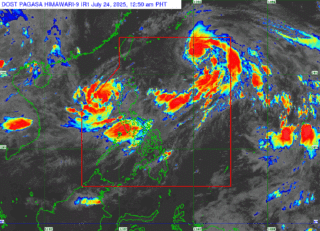Smart Communications Inc. said its fourth-generation (4G) network would soon make its way from the white-sand beaches of Boracay into major urban centers around the country.
According to Rolando G. Peña, head for IT and network systems of Smart, Long Term Evolution (LTE) will be made available in Metro Manila soon, with Cebu, Davao and other major Philippine cities and municipalities to follow shortly.
“We are excited to see how people will take to LTE in a real world setting.” Peña said.
“Deploying the technology in areas where Filipinos live and work is a great way to see just how LTE will affect their lives.”
Introduced last summer in Boracay, LTE is the next step in wireless data technology. It is by far the most advanced means of meeting and exceeding the demands of a content-hungry subscriber base as proven by its rollout in Japan (NTT DoCoMo) and Europe (TeliaSonera).
“Being able to just call and text no longer cuts it in this new age of mobile telephony” Peña said. “Data access and Internet connectivity have become just as essential and it will continue to be so in the foreseeable future.”
With LTE, Smart subscribers will experience blazing fast download speeds of 50-70 megabits per second-allowing them to benefit from the wonders of the web faster than ever before. Tasks that once required long wait times such as downloading applications, watching high-definition videos or accessing large documents will now take no more than mere seconds with the power of the new network.
The developments, however, do not stop there as Smart has already announced it was ready to increase LTE’s throughput to up to 100mbps if the market would demand for it. This, as defined by the International Telecommunications Union (ITU), makes Smart’s LTE network a genuine 4G infrastructure as it exceeds the minimum required speed (100mbps) for high mobility connections.
As part of its continuing commitment to 3G, Smart is also enhancing its existing network by simultaneously upgrading more base stations with High Speed Packet Access Plus (HSPA+) technology.
“We have been testing HSPA+ technology since 2009 and we feel that it is an opportune time to expand 3G’s capabilities to better complement LTE,” Peña said. “We are looking to have HSPA+ connectivity in 30 cities and municipalities around the country by the end of this month.”
Although not as advanced as LTE, HSPA+ improves on the existing 3G network by making it capable of download speeds of up to 27.8 mbps.
Equally important as the wireless connections, however, are the Fiber Optic Cables (FOCs) that connect base stations to the core network. To date, Smart and parent PLDT boast of a comprehensive loop of more than 42,000 kilometers of fiber optic cabling nationwide.
By the end of the year, the combined network of Smart and PLDT is expected to have an additional 3,000 kilometers of FOCs, giving its HSPA+ and LTE services unparalleled resiliency and stability.


